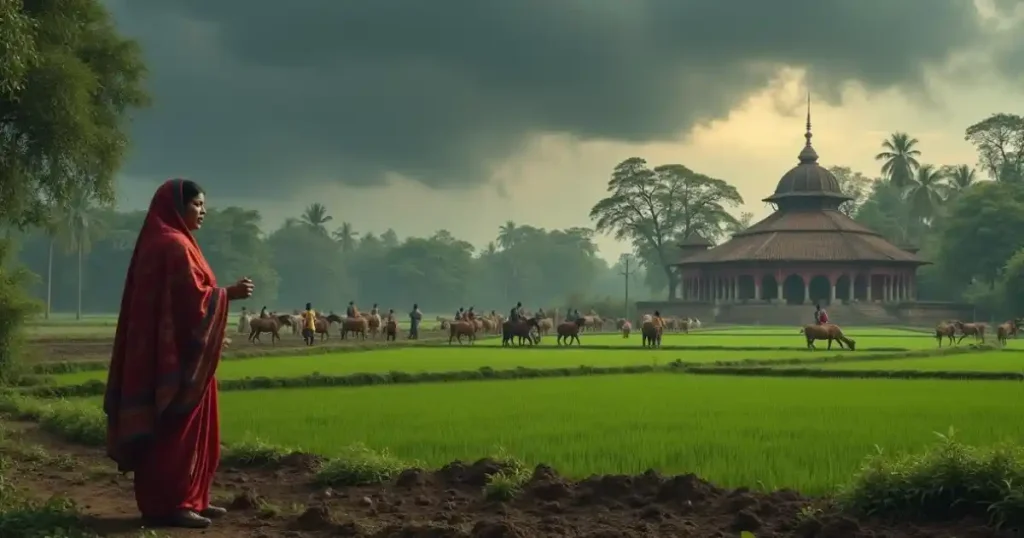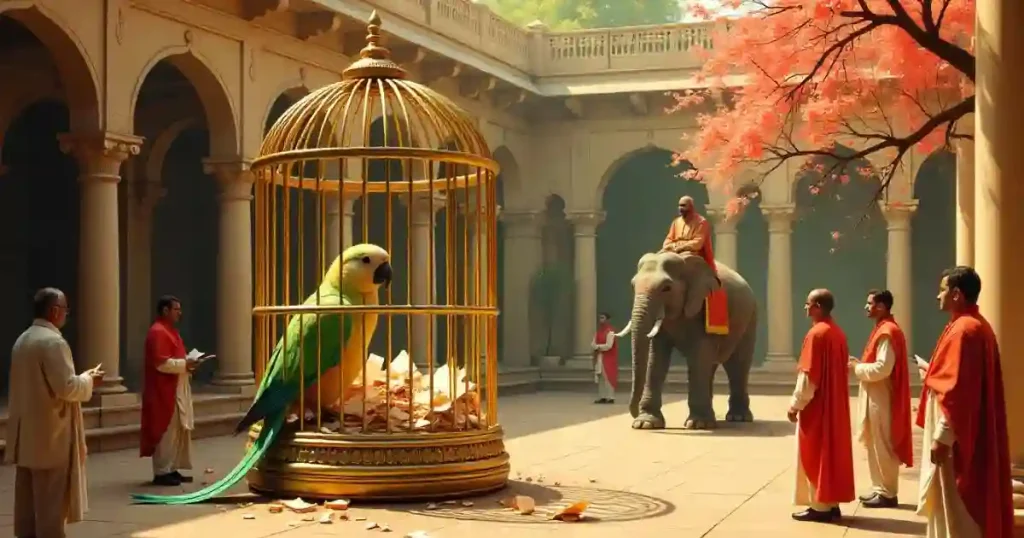Great Women- Virginia Woolf wrote in 1928, “A woman must have money and a room of her own if she is to write.” By ‘room’ she meant a private and social space for a woman where she can educate herself and develop her creativity. As we know, European women had to struggle to get entry to universities. In our country, British colonial administration first opened the doors of educational institutions to women.
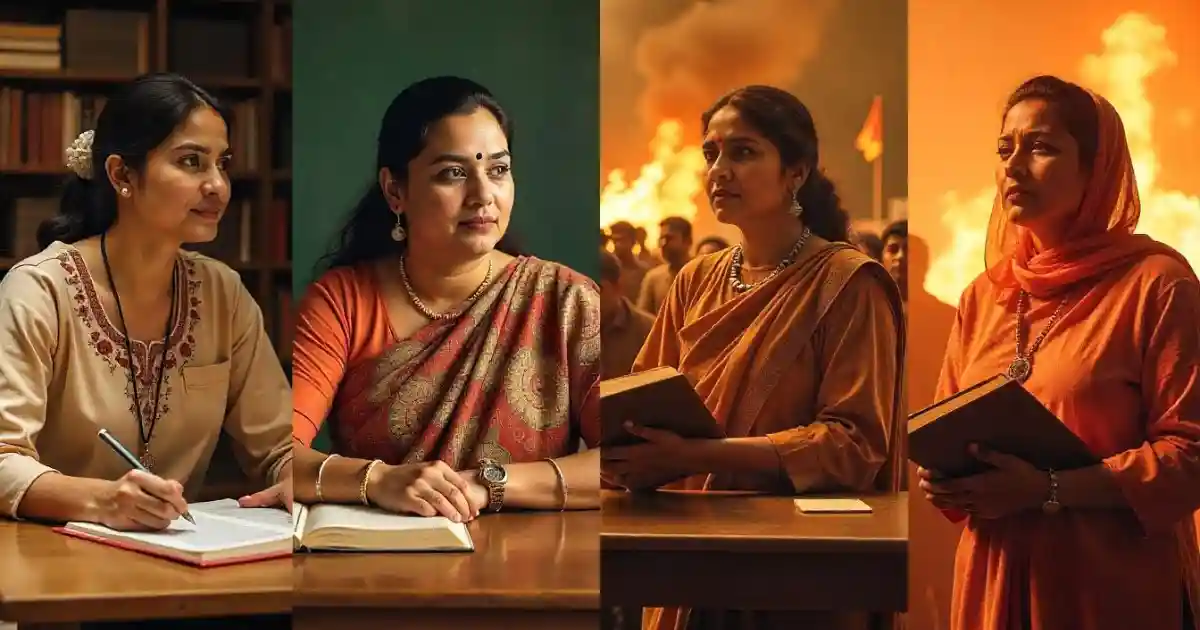
Do you feel the urge to know how Bengali women were initiated into English education? We know of the contribution of Rokeya Sakhawat Hossain to women’s education in undivided Bengal. Rokeya also wrote in English. Her Sultana’s Dream is considered the first science-fiction written by a woman. Rokeya’s legacy is strong among subsequent generations of women in the region, and it is important for us to explore the paths women took to take their place in the field of education.
Read more – AI Classrooms: Benefits, Challenges & EdTech’s Role- U1L2
Leela Nag: First Female Student of the Department of English, Dhaka University
In 1921, Leela Nag (also known as Leela Roy for her marriage with Anil Chandra Roy, an Indian National Congress leader) was the first woman to be admitted to the M.A in English at the University of Dhaka. Breaking patriarchal barriers, Leela Nag established the identity of the Department of English from the very beginning as a platform for progressive and liberal ideas. Although her decision to join the Department of English was initially met with resistance, she achieved her goal with a special permission from the then Vice Chancellor Philip Hartog and fulfilled her dream of graduating from the University of Dhaka.
In 1923, she was the first woman to receive an M.A. from the Department of English. But Leela Nag’s legacy goes beyond the confines of classrooms. While she was a student, she formed the Dhaka Women’s Committee and raised funds for the 1921 Bengal flood victims. She was actively involved in the empowerment of women in society. In 1923, she founded Deepali Sangha which served as a training institute for anti-colonial activists. Between 1927 and 1928, she established the first self-defense institute for girls in Bengal.
Then, at the 1928 Calcutta Congress Session, she presented a paper on the history of women’s movement in Bengal as a delegate, and by 1929. Leela Nag had successfully founded 12 free primary schools for girls. Apart from her contribution to women’s emancipation, Leela consistently voiced her opinions in politics as well. She had been imprisoned on several occasions. When the Subcontinent was embroiled in turmoil during the Partition, Leela Nag set up camps for victims of Noakhali riots in 1946. and for abandoned women and refugees from East Bengal in 1947. In 1946, she was the only Bengali woman elected to the Constituent Assembly of Bengal.
Leela Nag broke the glass ceiling on so many levels that it is very difficult to limit her to being only a feminist. She fulfills all the criteria of citizen, rebel, reformer, social activist and a change agent. Looking at the other women who studied in the Department of English much later, we can trace these features of social activism in them as well.
While Leela Nag made headlines during the 1947 Partition, Nadera Begum, another student of the Department of English, was making headlines in 1949. Coming from an affluent political family, Nadera Begum was a strong Marxist who was among the leading women rebels of her time. In 1949, she was expelled from the University of Dhaka for fighting for the rights of the fourth-class employees of the University. She was the only woman seen standing near Sheikh Mujibur Rahman during those protests.
In Cheman Ara’s article entitled ‘The Women who broke the barricades’ (published in The Daily Star, Feb 21, 2020), it is stated: “Names of Nadera Begum, Hamida Khatun, Nurjahan Murshid, Afsari Khanam, Ranu Mukherjee and Lili Haque also shine through in the history of the Language Movement.” Nadera Begum was a shining example of the multigenerational feminism that was evident among the women – both students and teachers of the Department of English. This is why, during the tumultuous 60s, soon after the Language Movement, we can find yet another woman as a valiant fighter against oppression.
Razia Khan Amin, who joined as a faculty member of the department in 1962, showcased her activism through her writing and her cultural interests. She had completed her B.A. and M.A. in English from the Department of English, University of Dhaka and proceeded to do her M.A. in English from the University of Birmingham on a scholarship from the British Council. She was simultaneously an educationist, a theatre actor, a journalist, columnist, a poet, and a celebrated writer. Among the prestigious awards she received are the PEN Lay Writing Award (1956), the Pope Gold Medal (1957), Bangla Academy Literary Award (1975), Ekushey Padak (1997), and the Anannya Literature Award (2003).
Amin exposes the brutality of the 1971 Liberation War through stark images in her poems. In her poem, ‘Argus Under Anaesthesia, she writes:
“A mother frenzied by the roar of mortars
Throttled her whining infant;
Its life for the life of millions”
In yet another poem, ‘God in the Goblet’, a melancholic tone addresses all the martyrs and the intellectuals who were mercilessly killed in 1971. References to “Muneer” the “playwright, pioneer”, “Hyder the Tagore-scholar”, “Fazle the Physician” and “the novelist Kaiser” form a tribute to the sacrifices of scholars of Bangladesh. Being a scholar herself, Amin had a unique approach to depicting the lives of women. In her poem ‘The Old Man and the Girl’ she breaks the silence and speaks out against child marriage and sexual oppression.
[This passage/content is taken from the National Curriculum and Textbook Board (NCTB), Bangladesh English textbook for educational purposes only.]
© NCTB Bangladesh. All rights reserved to the original publisher.
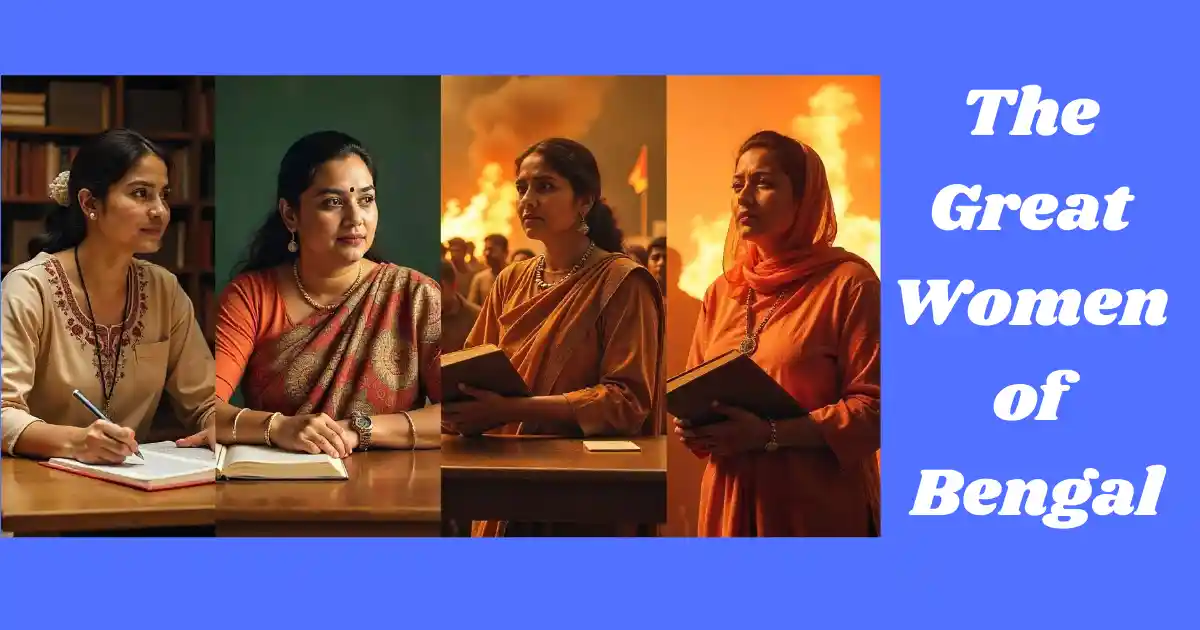
Read more – Prepositions: Rules, Examples, and Easy Usage Guide
Important Words and Phrases with Bangla Meanings
| English Word/Phrase | Bangla Meaning |
|---|---|
| A room of her own | নিজের একটি ঘর (নিজস্ব স্থান ও স্বাধীনতা) |
| Private and social space | ব্যক্তিগত ও সামাজিক পরিসর |
| Patriarchal barriers | পিতৃতান্ত্রিক প্রতিবন্ধকতা |
| Legacy | উত্তরাধিকার, দীর্ঘস্থায়ী প্রভাব |
| Contribution | অবদান |
| Science fiction | বৈজ্ঞানিক কল্পকাহিনি |
| Empowerment | ক্ষমতায়ন, শক্তি অর্জন |
| Self-defense institute | আত্মরক্ষামূলক প্রশিক্ষণ কেন্দ্র |
| Emancipation | মুক্তি, স্বাধীনতা |
| Constituent Assembly | গণপরিষদ |
| Feminism | নারীবাদ |
| Activism | কর্মসূচিভিত্তিক আন্দোলন |
| Social activist | সমাজকর্মী |
| Glass ceiling | অদৃশ্য সীমা যা নারীদের অগ্রগতিকে বাধা দেয় |
| Progressive ideas | প্রগতিশীল ধারণা |
| Liberal platform | উদারনৈতিক মঞ্চ |
| Reformer | সংস্কারক |
| Change agent | পরিবর্তনের কর্মী |
| Multigenerational feminism | বহু প্রজন্মজুড়ে নারীবাদ |
| Protest | প্রতিবাদ |
| Fourth-class employees | চতুর্থ শ্রেণির কর্মচারী |
| Language Movement | ভাষা আন্দোলন |
| Valiant fighter | সাহসী যোদ্ধা |
| Cultural interests | সাংস্কৃতিক আগ্রহ |
| Depict | চিত্রিত করা, বর্ণনা করা |
| Educationist | শিক্ষাবিদ |
| Columnist | কলাম লেখক |
| Journalist | সাংবাদিক |
| Stark images | তীব্র ও স্পষ্ট চিত্র |
| Melancholic tone | বিষণ্ণ সুর |
| Martyrs | শহীদগণ |
| Intellectuals | বুদ্ধিজীবী |
| Tribute | শ্রদ্ধাঞ্জলি |
| Child marriage | বাল্যবিবাহ |
| Sexual oppression | যৌন নিপীড়ন |
| Oppression | নির্যাতন, শোষণ |
| Rebellion | বিদ্রোহ |
| Utopian society | কল্পনার আদর্শ সমাজ |
| Gender equality | লিঙ্গ সমতা |
| British colonial administration | ব্রিটিশ ঔপনিবেশিক শাসন |
| University admission | বিশ্ববিদ্যালয়ে ভর্তি |
| Resistance | প্রতিরোধ, বাধা |
| Philanthropy | সমাজসেবামূলক কার্যক্রম |
| Dhaka Women’s Committee | ঢাকা মহিলা কমিটি |
| Deepali Sangha | দীপালী সংঘ (নারী প্রশিক্ষণ কেন্দ্র) |
| Training institute | প্রশিক্ষণ কেন্দ্র |
| Political leader | রাজনৈতিক নেতা |
| Riot victims | দাঙ্গা-আক্রান্ত মানুষ |
| Refugees | শরণার্থী |
| Social change | সামাজিক পরিবর্তন |
Para-wise Bangla Explanation
Para 1:
ভার্জিনিয়া উলফ ১৯২৮ সালে বলেছিলেন, “একজন নারীর লেখালেখির জন্য অর্থ ও নিজের একটি ঘর থাকা প্রয়োজন।” এই ‘ঘর’ বলতে তিনি বোঝাতে চেয়েছেন এমন একটি জায়গা যেখানে নারী নিজের মত করে চিন্তা করতে পারে, শিক্ষা গ্রহণ করতে পারে এবং সৃজনশীলতা বিকাশ ঘটাতে পারে। ইউরোপে নারীদের বিশ্ববিদ্যালয়ে প্রবেশের জন্য সংগ্রাম করতে হয়েছে। উপনিবেশিক আমলে ব্রিটিশ প্রশাসনই প্রথম বাঙালি নারীদের জন্য শিক্ষার দরজা খুলে দেয়। এই প্রেক্ষাপটে রোকেয়া সাখাওয়াত হোসেনের অবদান অনস্বীকার্য। তিনি ইংরেজিতে লেখালেখি করতেন এবং তাঁর লেখা Sultana’s Dream হলো নারীদের লেখা প্রথম সায়েন্স ফিকশন।
Para 2:
১৯২১ সালে লীলা নাগ ঢাকা বিশ্ববিদ্যালয়ের ইংরেজি বিভাগে প্রথম নারী এম.এ. শিক্ষার্থী হিসেবে ভর্তি হন। প্রথমদিকে তার ভর্তি নিয়ে বাধা এলেও উপাচার্য ফিলিপ হার্টগের বিশেষ অনুমতিতে তিনি এই সুযোগ পান। ১৯২৩ সালে তিনি প্রথম নারী হিসেবে এম.এ. ডিগ্রি লাভ করেন। তবে লীলা নাগ কেবল শিক্ষার্থী নন—তিনি ছিলেন সমাজকর্মী, রাজনীতিক, ও আন্দোলনকারীদের একজন। তিনি ঢাকায় নারী কমিটি গঠন করেন, বন্যার্তদের জন্য তহবিল সংগ্রহ করেন এবং নারীদের আত্মরক্ষার প্রশিক্ষণ কেন্দ্রও প্রতিষ্ঠা করেন।
Para 3:
১৯২৮ সালে কলকাতা কংগ্রেসে নারীদের আন্দোলনের ইতিহাস নিয়ে লীলা একটি পত্র উপস্থাপন করেন এবং ১৯২৯ সালের মধ্যে তিনি ১২টি মেয়েদের জন্য প্রাথমিক বিদ্যালয় প্রতিষ্ঠা করেন। দেশভাগের সময় তিনি দাঙ্গা-পীড়িতদের সাহায্য করেন এবং ১৯৪৬ সালে গণপরিষদের একমাত্র বাঙালি নারী সদস্য নির্বাচিত হন।
Para 4:
১৯৪৯ সালে ঢাকা বিশ্ববিদ্যালয়ের আরেক শিক্ষার্থী নাদেরা বেগম ভাষা আন্দোলনের প্রেক্ষাপটে গুরুত্বপূর্ণ ভূমিকা রাখেন। তিনি বিশ্ববিদ্যালয়ের কর্মচারীদের অধিকার রক্ষায় আন্দোলন করেন এবং এজন্য বহিষ্কৃত হন। তিনি ছিলেন সেইসব নারীদের একজন, যারা ভাষা আন্দোলন ও রাজনৈতিক সচেতনতা বৃদ্ধিতে গুরুত্বপূর্ণ ভূমিকা রাখেন।
Para 5:
১৯৬২ সালে রাজিয়া খান আমিন ঢাকা বিশ্ববিদ্যালয়ের ইংরেজি বিভাগে শিক্ষক হিসেবে যোগ দেন। তিনি সাহিত্য, নাটক, সাংবাদিকতা এবং কবিতার মাধ্যমে নিজের ভাবনা প্রকাশ করতেন। তিনি নারী জীবন, সমাজ ও মুক্তিযুদ্ধ নিয়ে লিখেছেন। তাঁর কবিতায় ১৯৭১ সালের নির্মম বাস্তবতা ও শহীদ বুদ্ধিজীবীদের স্মৃতিচারণ ফুটে ওঠে।
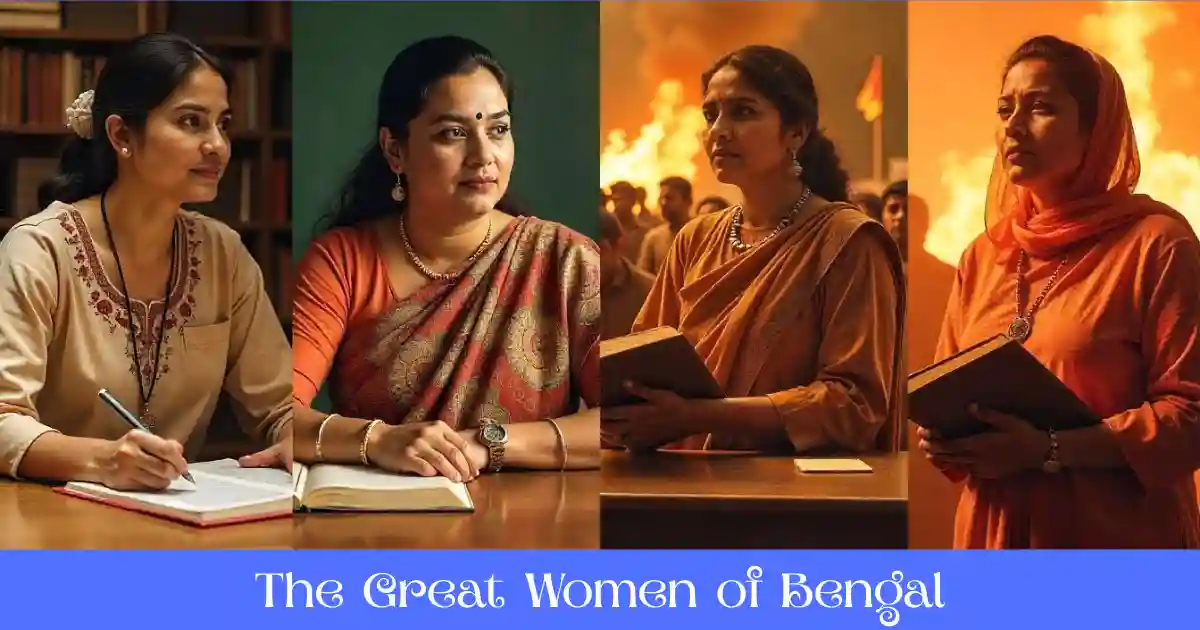
Relevant Historical Events
- 1921: Establishment of Dhaka University and admission of Leela Nag.
- 1921 Bengal Floods: Leela’s relief fundraising.
- 1928 Calcutta Congress: Leela presents women’s movement paper.
- 1947 Partition of India: Leela’s relief camps for riot victims.
- 1949 Student Movement at DU: Nadera Begum’s expulsion.
- 1952 Language Movement: Nadera and others’ role.
- 1971 Liberation War: Razia Khan’s poetic reflections on martyrdom.
Literary Terms Explanation
- Science Fiction: A literary genre involving futuristic science or technology—Rokeya’s Sultana’s Dream imagines a utopian society run by women.
- Imagery: Use of vivid language to describe scenes, especially emotional or dramatic ones. E.g., Razia Khan’s depiction of a mother killing her child in war chaos.
- Tone: The emotional attitude of the writer—melancholic in “God in the Goblet.
Answer the following Short Questions
- When and where was Leela Nag born?
- What was Leela Nag the first woman to do in Dhaka?
- Name the revolutionary organization she was a part of.
- What did she do after being arrested in 1931?
- What was the name of the school she established?
- Which political party did Leela Nag later join?
- Whose ideals deeply influenced Leela Nag?
- What was Leela Nag’s contribution to education?
- Why is Leela Nag remembered in Bangladesh’s history?
- How did Leela Nag inspire future generations of women?
